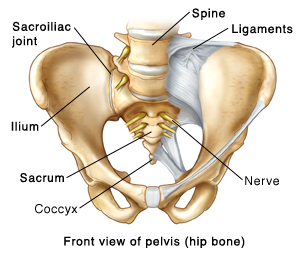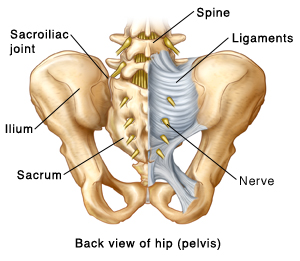There are 2 sacroiliac (SI) joints. They are in the very low back (buttocks area). There is 1 joint on either side of the pelvis. The SI joints link the sacrum to the ilium. The sacrum is a triangular bone at the bottom of the spine. The ilium is part of the pelvis. The SI joints are held in place by ligaments. Ligaments are strong tissue that link bone to bone. The joints don't move very much. But they do help with mobility. They work with your spine and femurs to help you bend and walk. They also help bear the weight of your upper body.
© 2000-2025 The StayWell Company, LLC. All rights reserved. This information is not intended as a substitute for professional medical care. Always follow your healthcare professional's instructions.


- Main Phone:
(404) 616-1000 - Main Campus:
80 Jesse Hill Jr Drive SE
Atlanta, GA 30303
About Grady
Patient Links
Other Links

